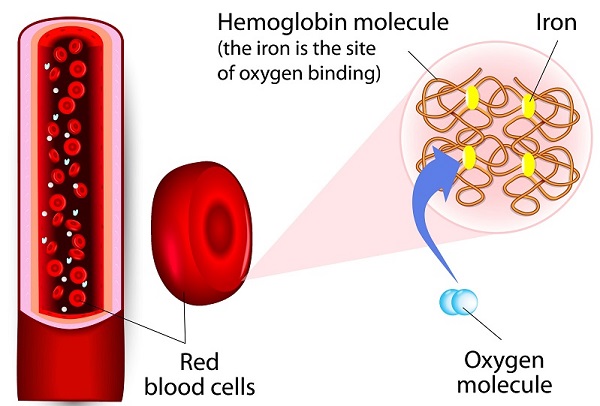
- Biology Notes for UPSC IAS Prelims (Part II)
- Biology - Home
- Biology - Classification of Organisms
- Biology - Cell Division
- Biology - Virus
- Biology - Bacteria
- Biology - Fungi
- Biology - The Roots
- Biology - The Plant Stem
- Biology - The Plant Leaf
- Biology - The Flowers
- Biology - The Fruit
- Biology - Plant Diseases
- Biology - The Blood
- Biology - Blood Group
- Biology - Human Brain
- Biology - Skeleton System
- Biology - Endocrine System
- Biology - Endocrine Diseases
- Biology - Carbohydrate
- Biology - Proteins
- Biology - Fats
- Biology - Vitamins
- Biology - Minerals
- Biology - Genetic Terminology
- Organisms & their Chromosome Counts
- Biology - Viral Diseases
- Biology - Bacterial Diseases
- Branches of Biology
- Inventions & Discoveries in Biology
- Nobel Prize in Biology
Biology - The Blood
Introduction
The body fluid, found in almost all multicellular fauna (animals, birds, reptiles, etc.), and responsible for transporting necessary substances such as oxygen and nutrients to different parts of the body, is known as blood.
Blood is basically connective tissue in the liquid form.

Blood is largely composed of blood cells and plasma.
Plasma constitutes about 55 percent of blood fluid.
The pH value of blood pH is ranging between 7.35 and 7.45, i.e. slightly basic.
Plasma is mostly water (i.e. 92% by volume) and contains dissipated proteins, glucose, hormones, mineral ions, and carbon dioxide.
The blood of vertebrate (animals) appears bright red when its hemoglobin is oxygenated; when it is deoxygenated, it (blood) appears dark red.
The blood accounts about 7 percent of the human body weight.
Functions of Blood
Following are the significant functions of blood in the body −
Transports oxygen to tissues and cells located in different parts of the body
Supplies nutrients (e.g. glucose, fatty acids, amino acids, etc.) to tissues and cells located in different parts of the body
Removes waste products (e.g. carbon dioxide, urea, etc.) and help to throw outside the body
Also strengthens the immune system of the body
Regulates the body temperature.
Blood Terminologies
Following are the significant terminologies that help to understand the blood −
Blood Cells − based on color and function blood cells are classified as Red Blood Cells (RBC) and White Blood Cells (WBC).
Red Blood Cells (see the image given below) consist of red pigments, known as haemoglobin, helps in oxygen transportation.

White Blood Cells − (WBC) increase the immune system of the body, as it fights with the harmful germs that enter in your body.
Platelets − Blood platelets have very important function i.e. it helps in blood clotting.
Lymph − Lymph is a colorless fluid, which contains specialized lymphocytes; lymphocytes are accountable for the immune responses of the body.
Blood Vessels
Following are the two major types of blood vessels −
Arteries and
Veins
Let’s discuss them in brief −
Arteries
The blood vessels that carry oxygen-rich blood (i.e. pure blood) from heart to all different parts of the body is known as arteries.
Arteries usually have thick (vessels) wall because of having high blood pressure.
All types of arteries transport oxygen rich blood from heart to different parts of the body except ‘Pulmonary Artery.’
Pulmonary Artery carries carbon dioxide rich blood from heart to the lung for the oxygenation purpose.
The tiny networks of blood vessels are known as capillaries. Capillaries are very thin structure.
Veins
The blood vessels that carry carbon dioxide rich blood (i.e. impure blood) from different parts of the body back to heart are known as veins.
Veins usually have comparatively thin (vessels) wall.
The pulmonary vein carries oxygen rich blood from lung to the heart.